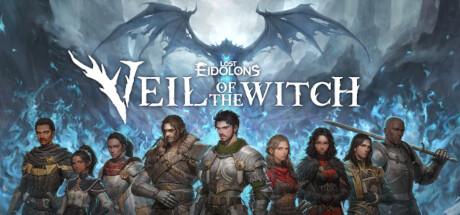When we first started developing Lost Eidolons, we gave a lot of thought to what kind of space the player might return to between battles. Initially, we envisioned a world akin to Thronebreaker: The Witcher Tales or Battle Chasers: Nightwar, where players could explore a vast map, encountering various allies, foes, and events.
However, once our structure solidified into a story-driven game with a linear plot, we realized that integrating that kind of free exploration into the narrative was a lot more challenging than we’d imagined. Even if it were feasible, it would demand an exorbitant amount of time and resources, blowing up our budget and release schedule.
Subsequently, our attention turned to approaches like Monster Hunter: World's Astera or Fire Emblem: Three Houses' Garreg Mach Monastery, where players engage in conversations with companions, progress quests, and embark on battles from a fixed location. This naturally evolved into the camp system that shipped in the final version of Lost Eidolons.
 Lost Eidolons, quite a bit into Eden's career as a general.>
Lost Eidolons, quite a bit into Eden's career as a general.>Initially modest, the camp gradually expanded, becoming home to more and more characters, and evolving into a fully-fledged battlefield camp with multiple districts, giant banners, and so on. We aimed to evoke the feeling of being part of a grand military force, and indeed, we discovered through community posts that a lot of players really enjoyed that feeling.
However, the camp in Lost Eidolons wasn't without its flaws, and didn’t always offer the best experience. Switching between turn-based RPG combat and real-time maneuvering always felt just a little bit strange, and coupled with the need to repeatedly traverse a large map, wound up taking up a lot of players’ time, even after the inclusion of fast travel.
Additionally, we soon encountered limitations in the variety of stories we could tell, when constrained by the setting of a single camp, and a structure without much breathing room for side-content. (Had the camp been, say, the picturesque Vyugar Mountains, or a bustling city like Leroyaure, we probably could have presented a wider range of stories.)

When we began developing Veil of the Witch, we faced similar dilemmas. As a game oriented towards replayability, we needed to incorporate elements between battles that repeated without feeling monotonous, while also addressing the negative experiences observed in Lost Eidolons.
The first solution that came to mind for our team was a pop-up event system, often seen in deck-building games like Slay the Spire or Monster Train. This method allows for the creation of numerous unique events at minimal cost. However, we felt that this approach didn’t really capture the feeling of exploring a vast and mysterious island in an immersive, engaging way.

Thus, we opted for a different method. We positioned characters on the field, allowing players to interact with things via a point-and-click interface, like an adventure game. We also drastically reduced the field size to eliminate the need for navigating sprawling maps like the camp in the first game.
The advantages of this method are that it provides players with the sensation of exploration in a way that still feels tactile and frictional, without having to run around manually. Plus, it works easily for a variety of input methods (mouse, keyboard, or controller). As a result, we were able to really cut down on the amount of time players spent dallying on the road between battles.
 <Veil of the Witch's version of the shop. We espy a familiar face.>
<Veil of the Witch's version of the shop. We espy a familiar face.>Once we settled on a point-and-click method, the next critical consideration was determining what players could interact with and how.
When we first started, road encounters consisted of a lot of simple run-ins with bags and treasure chests. Gradually, we progressed to placing wandering soldiers, villagers, and shopkeepers, and built simple narratives where the player can offer help or receive assistance. Players will also encounter grand altars and statues that enhance their abilities, and camps that let them rest overnight to train or recover health.

Aside from just gameplay enhancements like restoring HP or granting gold, we wanted these encounters to showcase characters’ personalities and relationships. When a thief attempts to rob your party, the kind-hearted Elena may opt for a peaceful resolution, whereas the cunning Emile or hardnosed Rosalina may have very different perspectives.
By choosing which characters to include in the party when they undertake an expedition, the player would also need to consider how they might impact the random events they’ll encounter along the journey.

With this toolkit, we’re working hard to build a variety of interesting story events and experiences that punctuate battles and make each expedition feel unique. Beyond just patching up weak points in Lost Eidolons’ design, our hope is to create an experience that invites new players in, while letting existing fans build a deeper relationship with characters they’ve met before and a world they already know.
But we’ve also got some other metagame content and systems that we haven’t really touched on yet, including Cooperation levels between characters, and the various map regions of Anareios. I look forward to delving into these topics some more soon!
Minyoung/Mocha

DISCORD
https://store.steampowered.com/app/2530490/Lost_Eidolons_Veil_of_the_Witch/
